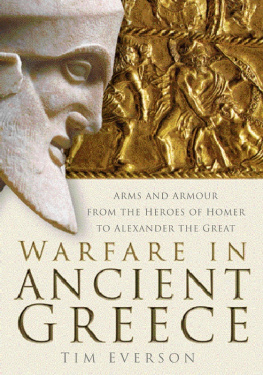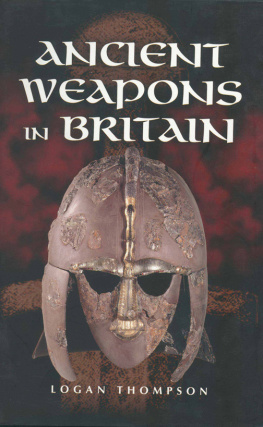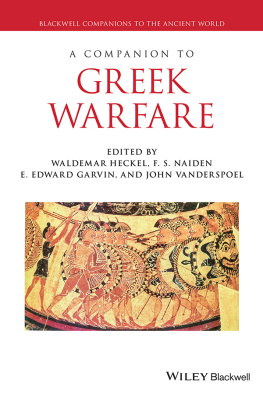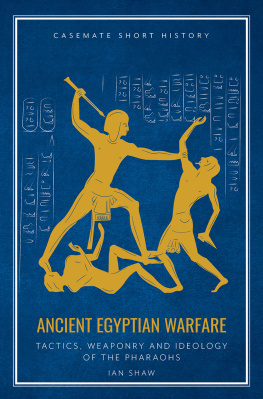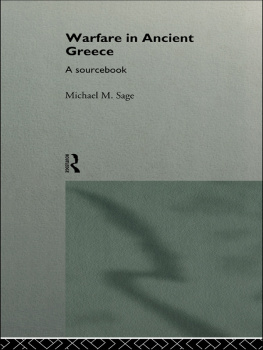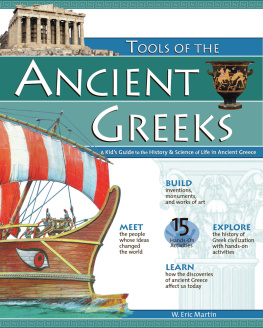

Endpapers, front: Mounted hoplite wearing a Corinthian helmet, Taranto, c. 550. (Trustees of the British Museum, GR 1904.7-3.1); back: a selection of Classical and Hellenistic helmets. (Ashmolean Museum, Oxford).
First published in 2004 by Sutton Publishing
The History Press
The Mill, Brimscombe Port
Stroud, Gloucestershire, GL5 2QG
www.thehistorypress.co.uk
This ebook edition first published in 2013
All rights reserved
Tim Everson, 2004, 2013
The right of Tim Everson to be identified as the Author of this work has been asserted in accordance with the Copyrights, Designs and Patents Act 1988.
This ebook is copyright material and must not be copied, reproduced, transferred, distributed, leased, licensed or publicly performed or used in any way except as specifically permitted in writing by the publishers, as allowed under the terms and conditions under which it was purchased or as strictly permitted by applicable copyright law. Any unauthorised distribution or use of this text may be a direct infringement of the authors and publishers rights, and those responsible may be liable in law accordingly.
EPUB ISBN 978 0 7524 9506 4
Original typesetting by The History Press
Contents
Preface
The study of Greek military matters has always come second to Roman in this country, which is hardly surprising since the Romans were actually here for 400 years; but the Greeks have a great deal more to offer us. Work on Greek arms and armour has often been the premiss of German scholars, who have been digging in Greece for well over a hundred years ever since Schliemann dug up Mycenae. One of the objects of this work is to bring some of this German, Greek and other research to an English-speaking audience. The difference between Roman and Greek warfare is often seen as the Roman legionary versus the Greek hoplite, but Greek warfare is not as simple as that. This book covers a span of nearly 1,500 years, of which only 250300 at the most are strictly hoplite warfare.
We begin in the late Bronze Age, when heroes battled each other in chariots and their exploits would be remembered and written down by Homer some 700 years later. We cover Homers own time and try to make sense of the dearth of evidence there is for the Greek Dark Age. After that there was the age of the hoplite, and then the renaissance of arms under Philip II and Alexander the Great of Macedon, when Greek warfare reached its greatest diversity; not only assorted infantry and cavalry, but chariots, elephants and even artillery made their appearance. We then follow the Hellenistic kingdoms until their defeat and/or dominance by Rome.
Recent work, such as that by Connolly, Hanson and Sekunda, has paid much attention to army organisation, strategy and tactics, with some work on the psychology of war and the equipment used. It is with the equipment, the arms and armour, that this book is concerned. The basis of all warfare is arms and armour. What weapons were actually used during which periods, and how effective were they? What was armour made of? Did it work, and why did it change so much? This book endeavours to answer these questions and to give a mental picture of what these soldiers were actually like. Some periods and aspects have been given more coverage than others. There is more controversy about Mycenaean arms and armour (and chariotry) than there is about hoplite warfare and equipment, for example, and so there is more to be written. Similarly, Snodgrass did a lot of work on different types of early spearheads, which does not need repeating in its entirety here. Everyone knows pretty well what a spearhead looks like. Body armour and helmets, on the other hand, show a much greater variety of types, which benefit from full examination and discussion, especially concerning their origins. Body armour is my own particular specialism and I make no excuses if it dominates parts of this book. In general, a sword is a sword, and a spear is a spear. (Not true, of course: please read this book for details!) But helmets, shields and body armour are what change the most, and are what make a soldier recognisable for what he is heavy infantry, light cavalry and so on and from what period he comes.
This book is aimed at anyone with an interest in warfare: students, soldiers, wargamers, historians and re-enactors. I hope reading it gives you as much interest as writing it gave me.
Tim Everson
February 2004
Acknowledgements
First and foremost I would like to thank Alastar Jackson, who was my tutor twenty years ago at Manchester University, and who encouraged me to study Greek rather than Roman military equipment. He also kindly read through the first three chapters of this book, and would have read them all if he had not had such a busy excavation schedule at Isthmia, and if I had been a faster writer! Much of his advice has been taken on board and, as the saying goes, any remaining errors are entirely my fault.
I should like to thank my brother, Anthony, for encouraging me to learn Greek at an early age, and Fr St Lawrence (RIP) and Tony Brook for teaching it to me. Also Tony Poole for his inspiring ancient history lessons at Wimbledon College.
I should also like to thank Peter Connolly, whose marvellously illustrated books inspired me from an early age, and who continues to do so much good work in this field. I should like to thank Anthony Snodgrass, who first wrote on this subject in an accessible and comprehensive form and who has given me many sleepless nights wondering about the existence of bronze armour in Dark Age Greece. I would like to thank especially Nick Sekunda for his many books on Greek and Hellenistic warfare. I often seem to disagree with his conclusions, but they really make you think, which is what books are for! Finally, I would like to thank Paul Hill for his advice on spears and javelins and for interesting conversations comparing the many similarities between the Greek Dark Age and the English Dark Age.
I would also like to thank my wife Shaan, and my daughters Eleanor and Rachel, for their forbearance during this project, and the musical talents of Jethro Tull and Enya, who have helped to calm my mind when the clash of Greek arms became overwhelming!
The Early Mycenaean Period, 16001300 bc
Civilisation in Greece developed rapidly under the influence of Crete in the second millennium BC, when trade was making Knossos, and Crete as a whole, wealthy. There is little evidence for warfare in the Aegean before about 1600, however, and it is sometimes assumed that a general peace existed under the thalassocracy, or sea-empire, of Cretan kings like the legendary Minos. What is perhaps more likely is that Mycenaean Greeks from the mainland wanted more of a share of the lucrative Aegean and eastern trade and that war became more common as a result after about 1650. Halfway through this period, in about 1400 BC, the palaces on Crete were destroyed and only Knossos was rebuilt. Here, the writing changed from local Linear A to Greek Linear B, and it is thought that mainland Greeks, probably from Mycenae, were responsible and that from c. 1400 onwards they ruled Crete, or at least central Crete, from Knossos.
For this early Mycenaean period we have much evidence in the way of finds of arms and armour and some useful artistic depictions, although these are not always clear. We also have small sketches called ideograms, which featurewith foreign enemies. This is another reason why we have more evidence for warfare at this time than previously.
Next page
